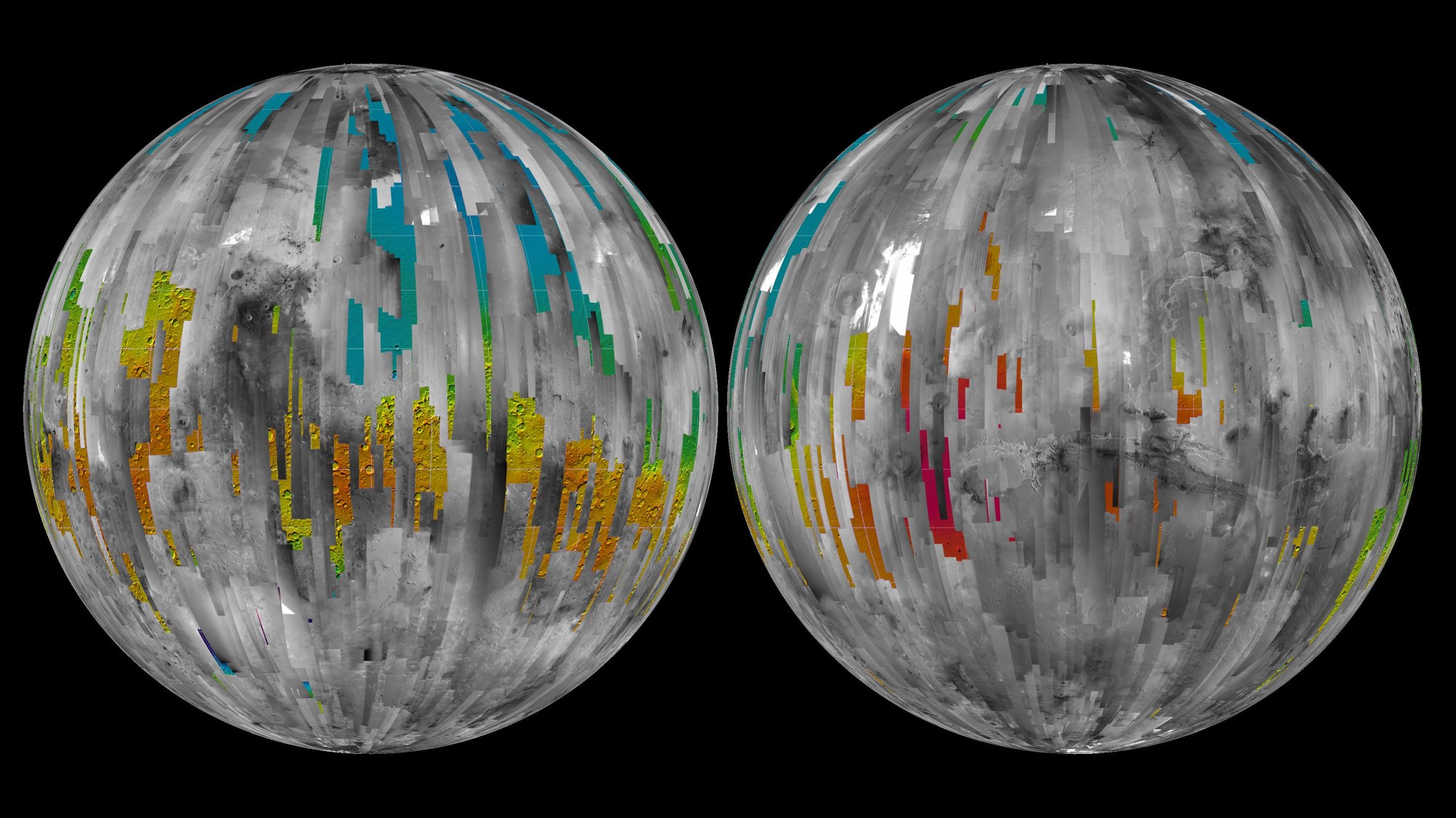Mars coverage by HRSC
Mars coverage by HRSC
Mars Express reached its destination on 25 December 2003, and the the High Resolution Stereo Camera, HRSC – developed at the DLR Institute of Planetary Research in Berlin – began operations on 10 January 2004. Since then, the spacecraft has been orbiting Mars, scanning its surface with no fewer than nine light-sensitive detectors arrayed at different viewing angles. That enables the same location, with minimal time lag and under identical light and atmospheric conditions, to be imaged several times from an altitude of approximately 250 kilometres – the data obtained supplies scientists with information about the heights and depths of the planetary surface. Roughly two thirds of the surface of Mars has now been photographed with good quality imagery. Indeed, 40 percent of the planet has been photographed at a resolution of roughly 10 metres per pixel, achieved when the spacecraft reaches its lowest altitude of 250 kilometres above the Martian surface on its elliptical orbit. This image shows the proportion of nadir coverage after orbit 8901.

